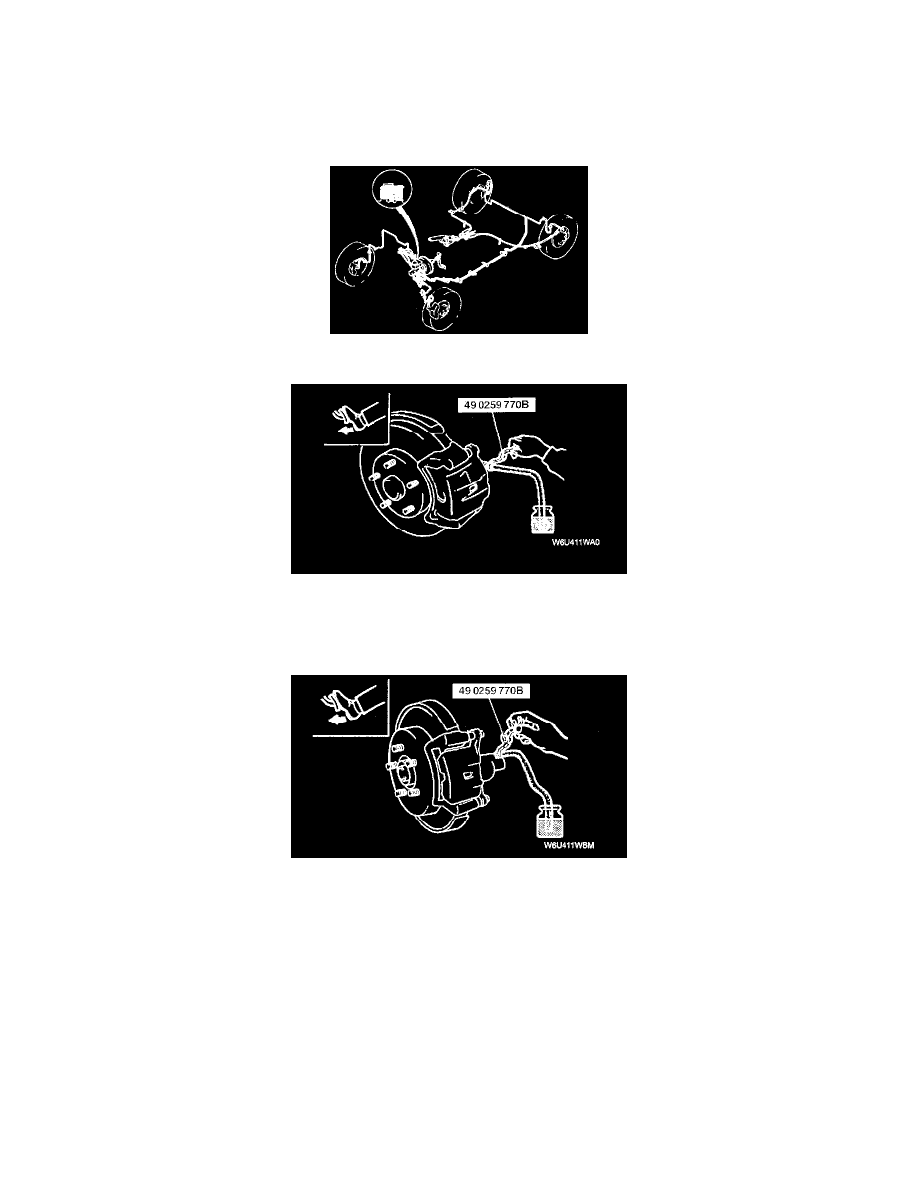MX-6 LS V6-2.5L DOHC (1997)

Brake Bleeding: Service and Repair
Manual Air Bleeding
Note: The brakes should be bled whenever a brake line is disconnected. If a hydraulic line is disconnected at the master cylinder, start at the slave
cylinder farthest from the brake master cylinder, and move to the next farthest slave cylinder until all four cylinders have been bled. If the disconnection
point is anywhere except the master cylinder, start at the point closest to the disconnection, and move to the next closest slave cylinder until all four
cylinders have been bled.
1. Jack up the vehicle and support it with safety stands.
2. Remove the bleeder cap and attach a vinyl hose to the bleeder plug.
3. Place the other end of the vinyl tube in a clear container.
4. One person should depress the brake pedal a few times, and then hold it in the depressed position.
5. A second person should loosen the bleeder screw, drain out the fluid, and retighten the screw by using the special service tool.
6. Repeat steps 4 and 5 until no air bubbles are seen. The reservoir should be kept about 3/4 full during bleeding to prevent air from reentering the
lines.
7. Check for correct brake operation.
8. Verify that there is no fluid leakage. Wipe off any spilled fluid immediately.
9. After bleeding the air, add brake fluid to the reservoir up to the specified level.
^
Torque
-
Front bleeder: 7-9 Nm (63-78 inch lbs.)
-
Rear bleeder: 5.9-8.8 Nm (53-78 inch lbs.)
